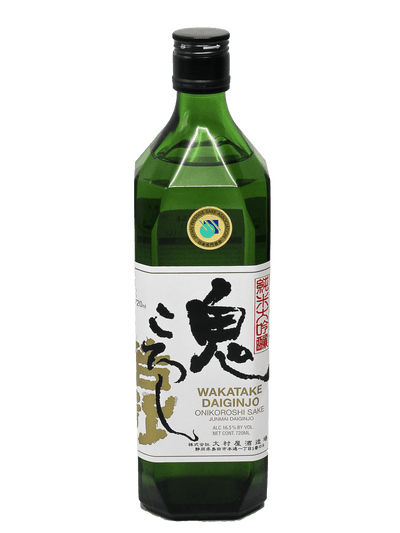Warm Climate Wines vs. Cool Climate Wines

You probably don’t pop into a wine bar and order a “warm-climate wine, please”; nor will you find restaurant wine lists categorized into “warm climate” and “cold climate” options. The differences between the two, however, are substantial and important to the character of the resulting wine. Also, with climate change affecting both viticulture and enology, the average temperature conditions of vineyards is a critical but perhaps not so dependable facet of winemaking.
The concept of warm climate versus cool climate wines plays a pivotal role in shaping the characteristics and flavors that sommeliers and connoisseurs savor in their glasses or when you want to order wine delivery. This duality reflects not only the impact of climate on grape cultivation but also the distinct cultural and historical narratives embedded in the regions where these wines thrive.
The Basic Differences
Warm climate regions, bathed in ample sunshine and characterized by higher temperatures, provide a nurturing environment for grapevines to flourish. Such areas often yield wines that are rich, bold, and full-bodied. Think of the robust reds of Sonoma County, home of the best online wine store, or the lush Malbecs from Argentina's Mendoza region. The sun-soaked vineyards contribute to grapes with higher sugar content, resulting in wines with elevated alcohol levels.
In contrast, cool climate regions, with their lower temperatures and extended growing seasons, produce wines that showcase elegance, finesse, and vibrant acidity. Iconic cool climate areas include Burgundy in France, the Willamette Valley in Oregon, and Germany's Mosel region. Grapes in these areas undergo slower ripening, leading to wines with lower alcohol content, higher acidity, and more pronounced aromatics.
Some Examples: Cool vs. Warm Climate Wines
The essence of warm climate wines, exemplified by renowned regions like California's Paso Robles, transcends the glass, embodying a spirit of boldness and opulence in that red wine bottle. The opulent nature of warm climate reds, such as Cabernet Sauvignon and Syrah, reflects the influence of ample sunlight, allowing the grapes to achieve optimal ripeness. These wines often boast dark fruit flavors, velvety tannins, and a lingering finish, creating an immersive tasting experience.
Conversely, cool climate wines encapsulate a different narrative, one of delicacy and nuance. Take, for instance, the Pinot Noirs of Burgundy or Oregon’s Willamette Valley. The grapes, nurtured in the cool embrace of the region, produce wines that are renowned for their transparency, showcasing the intricate interplay of fruit, acidity, and earthy undertones. When you open a white wine bottle from a cool climate, such as Chardonnay from Chablis, you will encounter crispness and bright acidity, offering a refreshing and lively palate.
Delving into the historical and cultural dimensions of warm and cool climate wines unveils fascinating stories entrenched in the very soil from which these vines emerge. The sun-drenched landscapes of warm climates have historically been associated with the birth of New World wine regions. California, for instance, embraced the potential of its warm climate to revolutionize the wine industry, challenging Old World traditions and establishing itself as a global wine powerhouse.
On the other hand, cool climate regions like Burgundy carry the weight of centuries of winemaking heritage, where monks meticulously tended to vineyards and laid the groundwork for the intricate classification systems that endure to this day. The cool breezes and extended growing seasons of these regions have shaped not only the wines but also the very culture surrounding them.
Sustainability by Climate
Sustainability has become a cornerstone in the contemporary discourse surrounding wine production, and it significantly influences both warm and cool climate viticulture. Warm climate regions, often grappling with challenges like water scarcity and intense heat, are increasingly adopting sustainable practices to mitigate environmental impact. From dry farming techniques to solar-powered facilities, these efforts reflect a commitment to preserving the delicate balance between nature and winemaking.
Cool climate regions, with their emphasis on maintaining acidity and capturing the essence of the terroir, also champion sustainable practices. Organic and biodynamic farming methods are gaining traction, as vintners recognize the importance of preserving the unique characteristics of their cool-climate wines. These endeavors not only contribute to environmental stewardship but also resonate with consumers increasingly conscious of the origins and ecological footprint of the wines they enjoy.
In the end, then, the dichotomy between warm and cool climate wines extends beyond the realms of taste, encompassing a rich tapestry of history, culture, and sustainable practices. Whether sipping on a robust Cabernet Sauvignon from the sun-soaked vineyards of California or savoring the nuanced complexities of a Burgundian Pinot Noir, each glass tells a story shaped by the climate and the hands that cultivated the grapes. In this intricate dance between nature and human craftsmanship, the world of wine unfolds, inviting you to explore the myriad expressions born from the interplay of warmth and coolness across diverse landscapes available at the best online wine store.
A Comparison
So, the next time your order wine online, consider the climate of the wines you consider buying.
Warm Climate Wines:
- Bold and Opulent: Warm climate wines, such as California Cabernet Sauvignon and Argentine Malbec, are characterized by their bold and opulent nature. The ample sunshine and higher temperatures contribute to grapes achieving optimal ripeness, resulting in wines with rich, full-bodied flavors.
- High Alcohol Content: The sun-soaked vineyards of warm climates lead to grapes with higher sugar content, translating into wines with elevated alcohol levels. This characteristic adds to the perceived warmth and intensity of the wine, contributing to a robust tasting experience.
- Dark Fruit Flavors: Warm climate regions often yield wines with pronounced dark fruit flavors. Think of the luscious blackberries, cherries, and plums found in Napa Valley Cabernet Sauvignon or Australian Shiraz. These wines showcase the sun's influence on grape development.
- Velvety Tannins: The tannins in warm climate reds tend to be velvety and smooth. This contributes to a luxurious mouthfeel, creating a harmonious balance with the wine's bold fruit profile. It's a texture that enhances the overall enjoyment of the wine.
Cool Climate Wines:
- Elegance and Finesse: Cool climate wines, exemplified by Burgundy Pinot Noir and German Riesling, embody elegance and finesse. The extended growing seasons and lower temperatures result in slower grape ripening, producing wines with delicate and nuanced characteristics.
- Higher Acidity: The cool embrace of regions like Oregon's Willamette Valley or France's Chablis imparts a higher acidity to cool climate wines. This acidity adds brightness and freshness to the palate, making these wines particularly refreshing and suitable for pairing with a variety of foods.
- Transparency of Flavors: Cool climate wines often showcase the transparency of flavors, allowing the intricacies of the grape and terroir to shine through. This is evident in the pure expression of fruit, earthy undertones, and minerality found in wines like Burgundian Pinot Noir.
- Lower Alcohol Content: Grapes in cool climate regions undergo slower ripening, resulting in wines with lower alcohol content. This characteristic enhances the drinkability of cool climate wines, offering a lighter and more delicate experience on the palate.


















Leave a comment